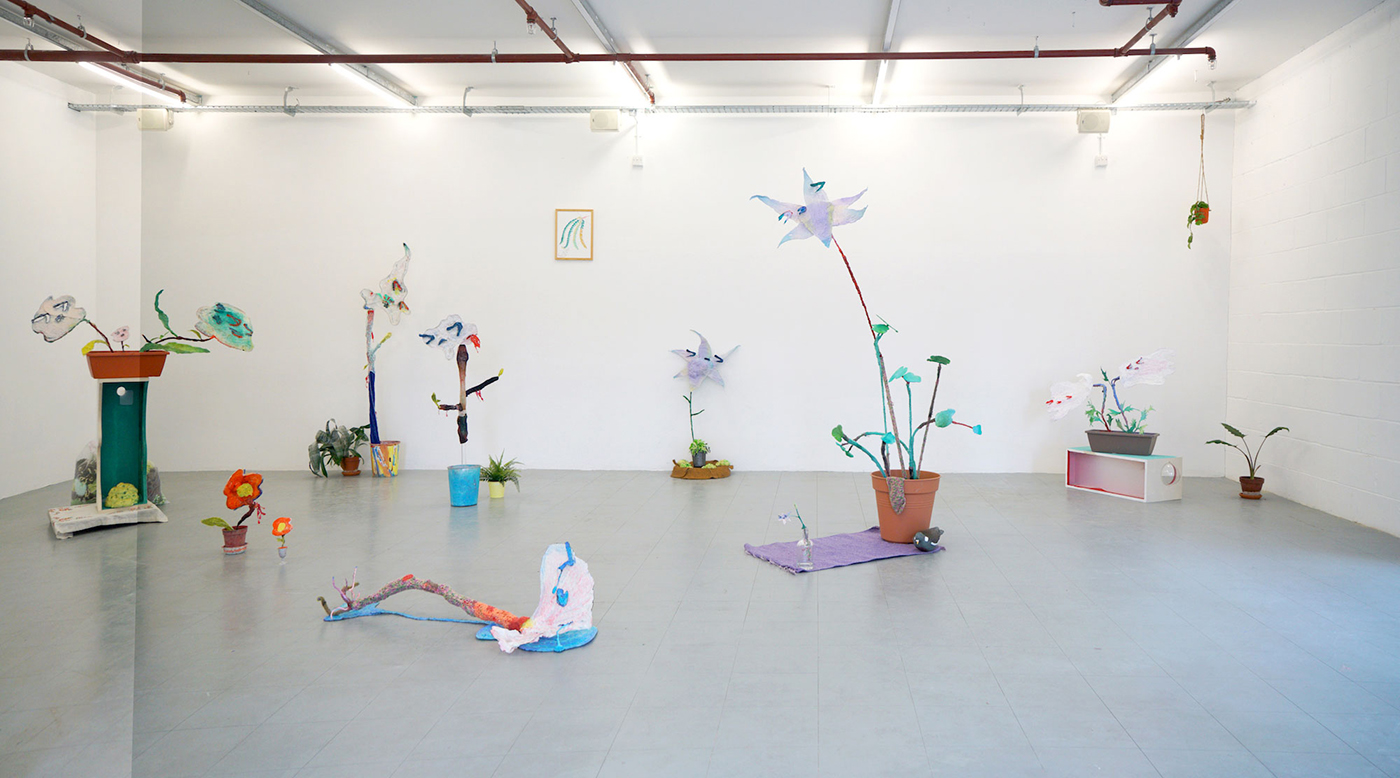Contemporary artist Yarli Allison addresses historically-rooted issues via her work, like immigration and her own complex identity as an Asian experiencing everyday life in Western society.
Is it not possible for me to fall back into self-simplifying Asians’ complex identities? How do I resist self-stereotyping in my works? What does my Asian face represent if I don’t feel at home anywhere?
Featured image: Yarli’s flower propagation series. London. 2020.

Artist portrait courtesy Yarli Allison.
What is the primary role of an artist? How do you describe yourself in the context of challenging people’s perspectives via your work and art?
The current climate of injustice, crisis, and turbulence, lead me to question my own responsibility, as an artist in this world. What can I offer to shape the voice of the people I care about, in our version of truth that is often neglected? How do we vent our stories via a personal channel that expands empathy, and at the same time, illustrates our collective experience of problematic social systems and structures? My works began to be less about me, and more about emphasising connections and finding imaginative solutions.
I think that creating chaos is like being a playful child, and being playful could be the way to naturally attract creativity.
Tell us about your studio, what kind of place is it? Could you describe your usual work-day?
Currently I’m setting up a new temporary studio in Paris, during the pandemic lockdown. There is an anxiety about making it ‘dirty’ or contaminated, so at times I feel it’s not messy enough to stimulate new creative problem-solving ideas. I think that creating chaos is like being a playful child, and being playful could be the way to naturally attract creativity. And my studio is the kind of place where I can relax my head: I bring an idea into the room, and lay my materials out, so I can eye-ball, and mix and match potentialities. It’s a highly intuitive process that is very reflecting and calming.

Star Flowers. Yarli’s flower propagation series. London. 2020.
How do you deal with the conceptual difficulty and uncertainty of creating new work?
As a multi-media artist, at times I feel the need to be a warrior, to fight off obstacles while I’m constantly exploring diverse mediums and tools. While there are many wall-hitting days, I think that if there are uncertainties then there must also be a creative solution. So I often play around with angles and materials, which always leave an impression on my final work. But ultimately, I have learnt that collaboration is always the key.

Then We Could Share These Red Buoys. Slade Show. London, UK. 2017.
What are you working on now? What’s coming next season?
During quarantine, I’m working on two of my most challenging projects which will be shown at ICA London (February 2021), and Videotage Gallery Hong Kong (October 2020).
For the ICA Decrimalised Future show, I will collaborate with Letizia, a millennial Spanish poet and sex worker who moved to London 7 years ago. The time-based video installation will accompany Letizia’s voice reciting her poems, and the digital-visual representation on the ‘ideal character’ for her clients’ imagination. The persona of Letizia can be seen as an aesthetically pleasing ‘product’ built from her experience, and in my understanding as a coping mechanism on the duality between labour and fantasy; ethics and aesthetics. We are interested in revealing the less visible material reality behind its curtain, by combining creative writing, voice performance, digital modelling and electronic music as a semi-fictional documentary.
On the other hand, the show in Videotage Gallery will be a multi-screen channel installation focusing on diasporas; Hong Kongers in Europe, with VR environment constructed videos. Almost like a ghostly confession, the four people poetically speak of their East-West experiences. The work touches on the idea of migration as a solution, with its raising problems and the unfulfilled desire of belonging and longing, which is a theme I am still sorting out myself.
These are the first works where I’ll be using Virtual Reality as a tool to expand on isolation, which brings many questions to my highly physical sculpture practice – like what is sculpture’s role in our time? Can we carry sculptures around with us with technology?

Image of Yarli at work playing with her sculpture.
What was your first sale? Do you handle the commercials yourself or is it outsourced to a gallery/agents?
My first experience of connecting my art with the economy, was with Toronto’s Gardiner Museum in the 25 under 25 charity show. I value handling the selling process personally, where I can select a trusted person to care for my works (after all, they are artists’ babies). Otherwise, I can see myself working with galleries and museums, developing a relationship based on mutual admiration and a genuine connection.
How are you balancing life and work at home during this (lockdown) period?
I just arrived in France from London before the lockdown, and I am personally affected and concerned with the rising xenophobia and sexual assaults. It stimulates new ideas to address this historically-rooted issue. It takes me back to question, what can I as an artist offer, and with what responsibilities? Is it not possible for me to fall back into self-simplifying Asians’ complex identities? How do I resist self-stereotyping in my works? What does my Asian face represent if I don’t feel at home anywhere? These questions feed into not only my works, but also how we experience everyday life in Western society. Now, more than ever, we have to come together, again, to collaborate and share skills.
For enquiries contact – yarliallison[at]gmail[dot]com
Before you go – you might like to browse our Artist Interviews. Interviews of artists and outliers on how to be an artist. Contemporary artists on the source of their creative inspiration.












Add Comment